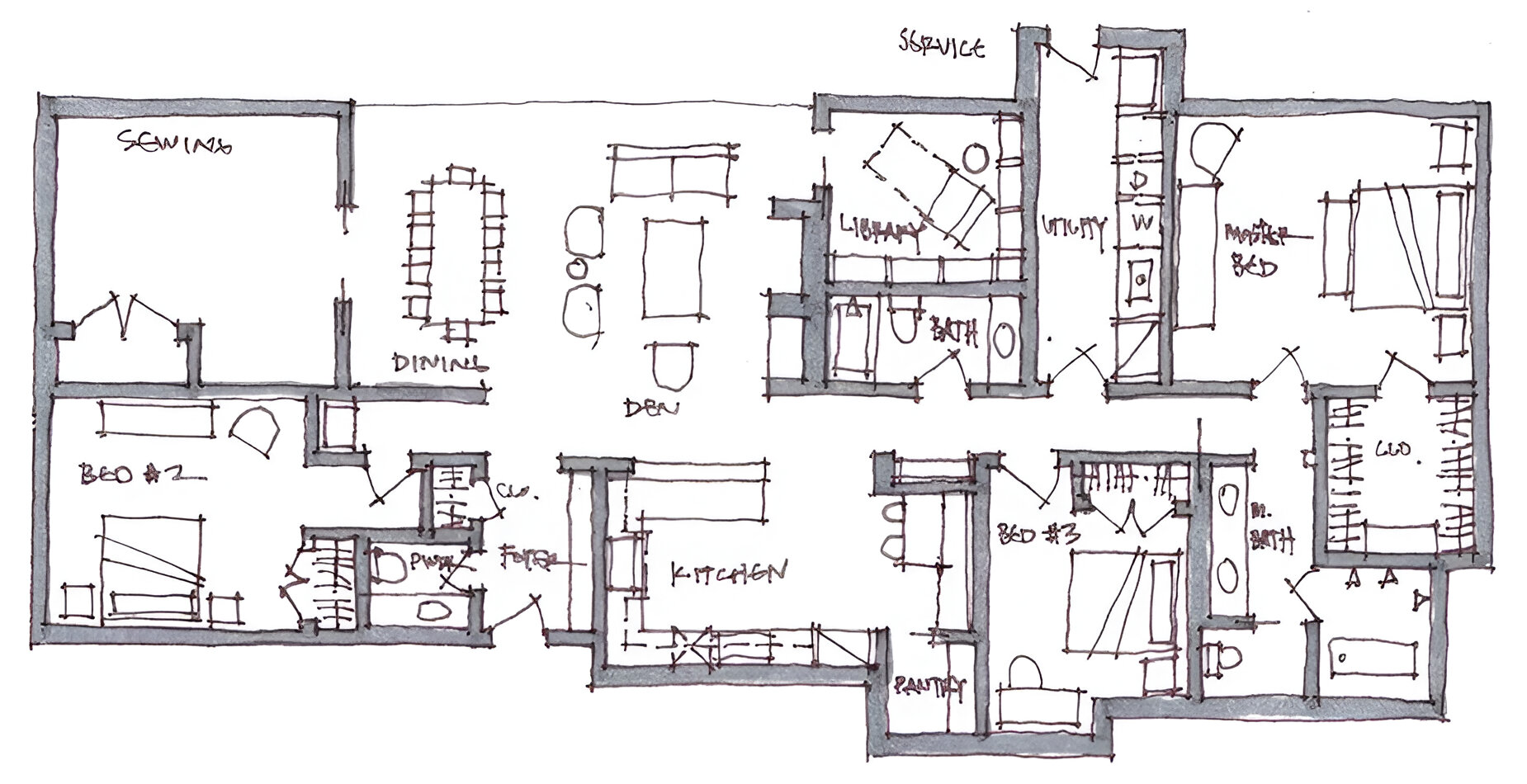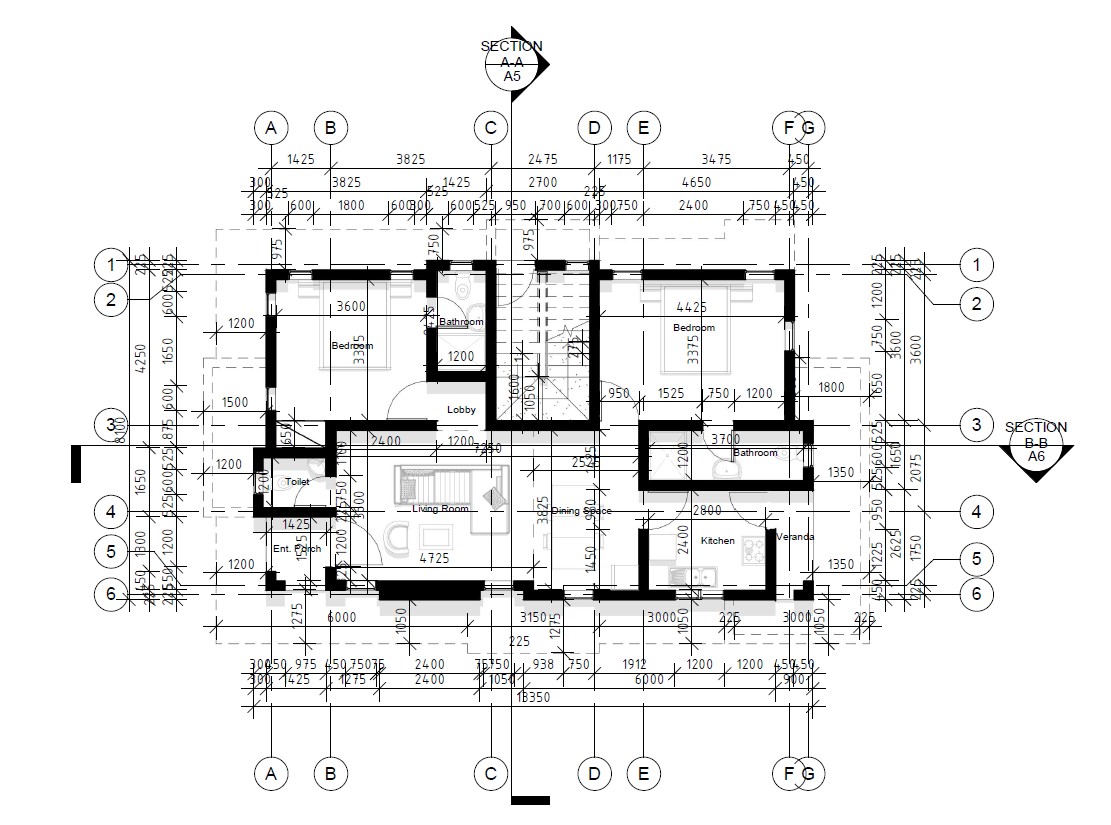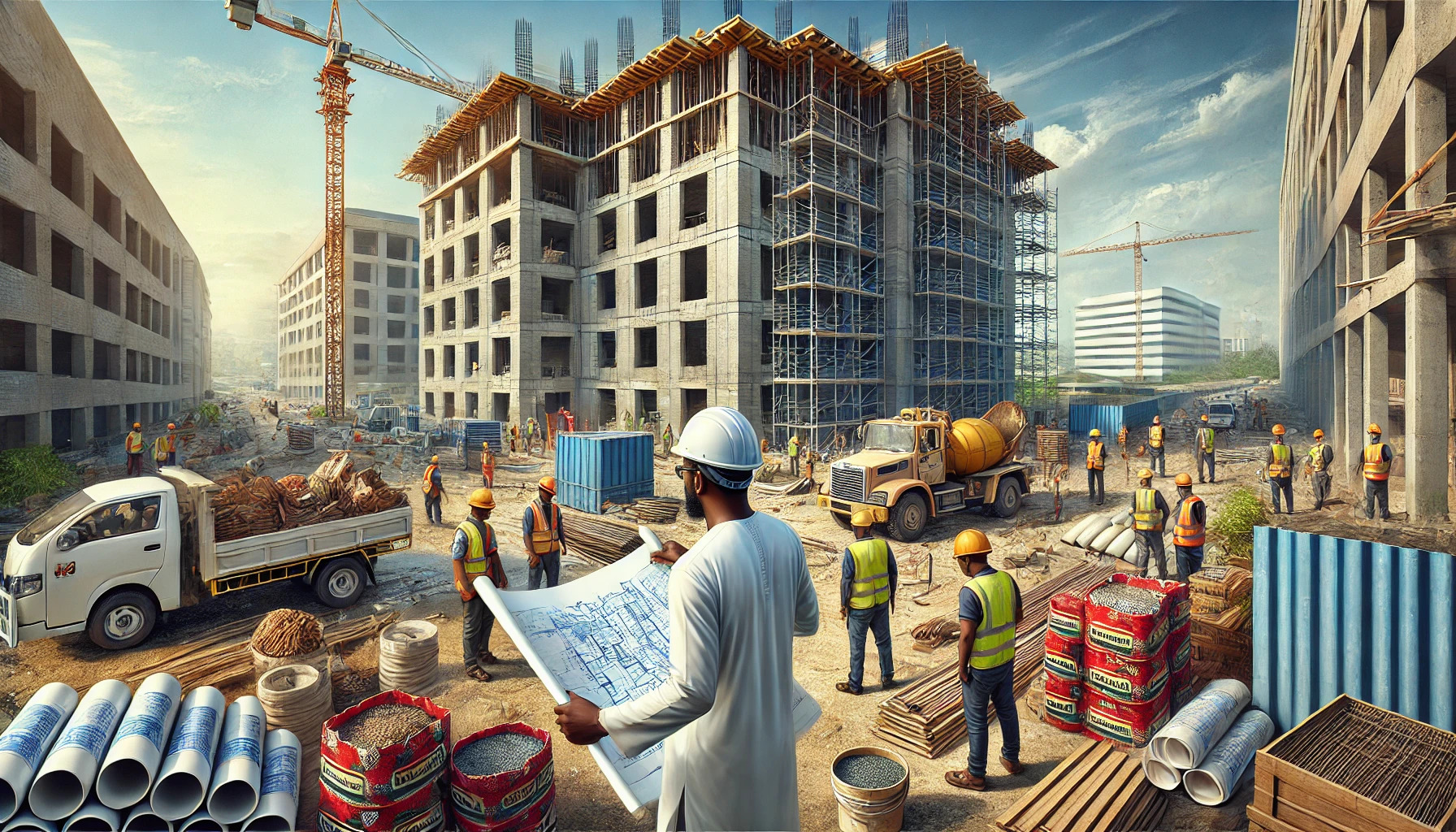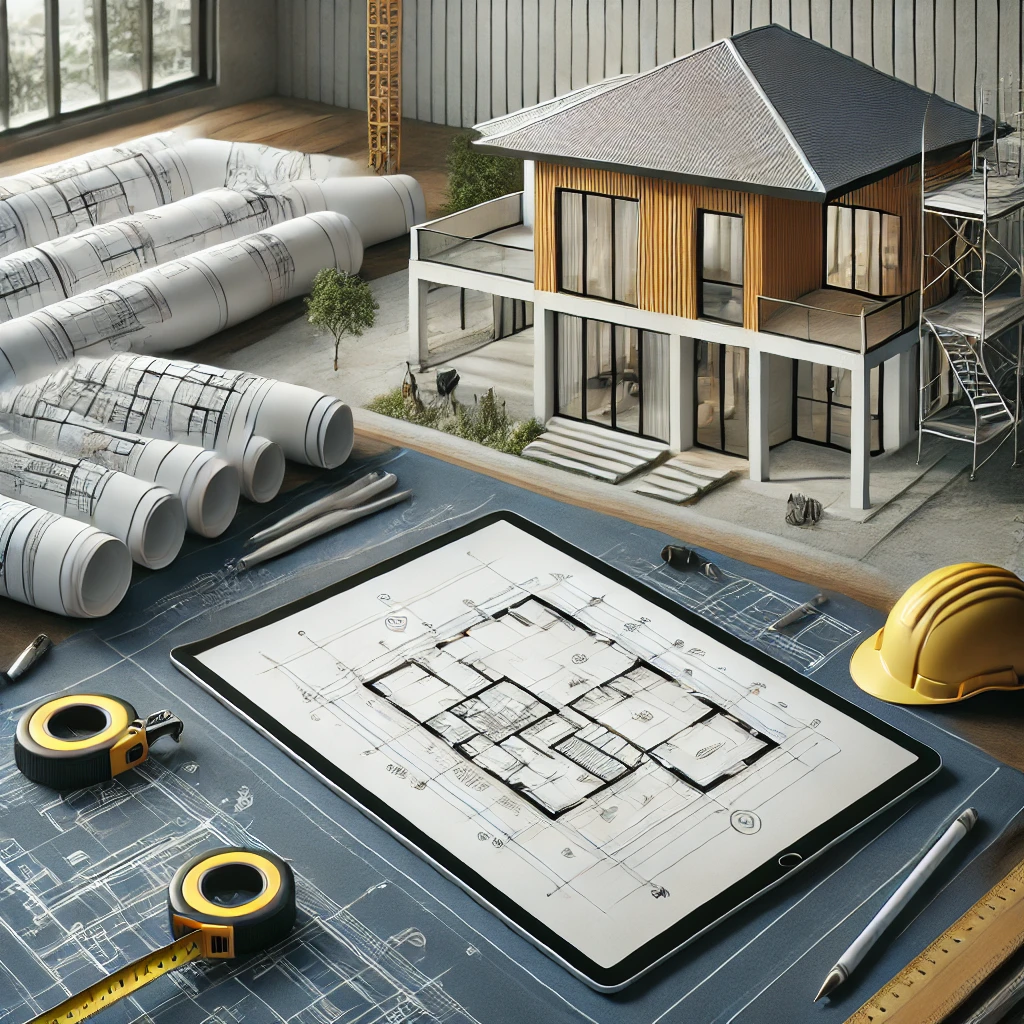Building your dream home or any structure in Nigeria is an exciting journey, but it requires thorough planning, the right expertise, and a clear understanding of the architectural design and construction process. Whether you’re envisioning a luxurious estate, a functional office space, or a cosy residential property, this guide will walk you through every critical step.
With this comprehensive approach, you’ll learn how to move from conceptualisation to actual construction while avoiding common pitfalls. By the end of this guide, you’ll have all the tools needed to turn your vision into a reality.
The Importance of Architectural Designs.
Architectural design is the foundation of any construction project. It determines the appearance, functionality, and long-term durability of the building. Good design doesn’t only focus on aesthetics but also on how spaces will be used, energy efficiency, and adaptability to the environment. For instance, designing a house in the bustling city of Lagos will be different from one in the quieter, more humid regions of Enugu.
Your architect plays a pivotal role in ensuring that the building is designed to meet your needs while adhering to local regulations and environmental conditions. Without solid architectural design, even the best-laid construction plans can falter.
Step 1: Conceptualising Your Architectural Design.

The journey to building your dream home in Nigeria begins with thinking through the building plan ideas in your mind. This phase is all about translating your dreams into practical ideas that architects can bring to life. Visualise your ideal home or workspace—whether it’s a minimalist house in the heart of Lagos or a peaceful bungalow in the serene environment of Abuja. In this phase, it’s crucial to consider the design and how the building will function for you and your family or business.
Sharing Your Vision with an Architect.
Engage a skilled architect as early as possible. Share your vision, describe how you want your building to look and feel, and consider its purpose. Your architect will take your ideas and transform them into realistic concepts. In this phase, it’s essential to be clear about:
Design Preferences: Do you want a modern home or something more traditional? Would you prefer open spaces or more enclosed rooms?
Budget: Your budget will guide material selection and other design decisions. For instance, if energy efficiency is a priority, you may need to allocate more funds towards insulation and high-quality windows.
Land Location: The location and condition of your plot will impact the building’s foundation and design. Is it flat, slopy or hilly? What are the surrounding structures and climatic conditions?
Your architect’s job at this point is to ensure that your ideas align with practical constraints, such as zoning regulations, land conditions, and your budget.
Conducting a Feasibility Study.
The architect often conducts a feasibility study to assess the land and determine whether your design aspirations are achievable. The architect will evaluate your site and consider factors such as access to water and electricity, soil conditions, and how the terrain could impact construction.
In addition, they’ll factor in government regulations such as those from the Lagos State Physical Planning Permit Authority, the Abuja Development Control Department, etc. This ensures your project complies with local laws and avoids future legal challenges.
Step 2: Schematic Design and Early Building Plans.

Once your ideas are clear, the next step is the schematic design phase. This is where your architect starts drafting early building plans. These initial sketches give a general idea of what the building will look like, and they also help in identifying the overall layout, dimensions, and flow of spaces.
What Happens in the Schematic Design Phase?
Preliminary Drawings: The architect creates floor plans and elevations to illustrate how the building will be laid out. These rough sketches are the first visual representation of your project, providing insight into how each room and area will connect.
Material Selection: At this stage, your architect helps you select the materials best suited for your design style, budget, and climate. For example, if you’re building in Lagos, where heat is a concern, selecting materials that help regulate temperature—such as concrete or insulated glass—will be essential.
Energy Efficiency: Given Nigeria’s energy challenges, architects often design buildings that maximise natural light and ventilation, reducing reliance on artificial lighting and air conditioning. Consider how you can integrate solar panels, passive cooling techniques, or natural shading through landscaping.
Preliminary Cost Estimates: A rough budget is prepared based on the schematic design. This helps you understand the potential costs and plan your finances effectively. Keep in mind that actual costs may fluctuate as the project progresses.
This phase helps establish a roadmap for your project. While it’s tempting to jump straight into construction, having clear schematic designs prevents future delays and cost overruns. Moreover, it allows you to visualise how the final building will look, enabling you to make any necessary changes before construction begins.
Step 3: Developing Detailed Building Plans and Designs.

After the schematic design is approved, the project moves into the design development phase, where detailed building plans are created. This phase builds on the preliminary drawings and adds specificity, including construction methods and materials.
Key Elements of Detailed Building Design.
Architectural Drawings: These include floor plans, sections, and elevations that show the dimensions of rooms, locations of doors and windows, and specific details for finishes like flooring, paint, and fixtures.
Structural Plans: These plans ensure the building is stable and can withstand every form of environmental stress against the building. Structural engineers often collaborate with architects to ensure the building can handle load-bearing requirements, wind forces, and other environmental factors.
Mechanical, Electrical, and Plumbing (MEP) Designs: MEP systems are critical for ensuring a building is liveable and functional. Your architect and engineers will plan for reliable power distribution, plumbing (water) systems, and air circulation to meet the needs of your project.
Obtaining Permits and Approvals.
In Nigeria, you’ll need to secure the proper permits from local authorities before moving forward with construction. Your architect is typically responsible for submitting these documents, ensuring that the project complies with national and local building codes. This includes permits from regulatory bodies such as the Federal Ministry of Works or local agencies like the Development Control Department.
Step 4: Construction Documentation and Tendering.
Once the detailed building plans are ready, construction documents are prepared. These are the blueprints that will guide the actual construction process.
Final Construction Drawings.
Final drawings are much more detailed than the preliminary plans. They include specific instructions for builders on how to execute the project from foundation to roofing. Every aspect of the building’s construction is covered, from structural details to interior finishes.
Tendering and Contractor Selection.
At this stage, most projects go through a tendering process where contractors bid on the construction work. However, if you are working with a design-build firm like Acumen Studeos, this step may be bypassed, saving time and ensuring that the same team that designed the building also constructs it.
The firm will also prepare a construction contract that outlines all aspects of the project, including the scope of work, payment schedule, and timeline. This ensures clarity and accountability between all parties.
Step 5: The Construction Phase.

With all the plans and documents in place, it’s time to break the ground. The construction phase is where your building starts to take physical form.
Key Stages of Construction.
Site Preparation: This involves clearing the land, levelling it, and setting up temporary structures that would aid the construction. In Nigeria, site preparation is critical due to varying terrain types and unpredictable weather.
Foundation and Structural Work: The foundation is laid, followed by the construction of the building’s frame. Walls, floors, and roofing systems are put in place during this stage.
Interior and Exterior Finishes: As construction progresses, the focus shifts to finishes, including painting, tiling, and installing fixtures.
Quality Control: Regular site inspections are necessary to ensure the building is up to Nigerian standards. Contractors must adhere to agreed-upon quality, ensuring all materials and workmanship meet expectations.
Common Challenges in Nigerian Construction.
Construction in Nigeria often faces challenges such as unexpected weather conditions, delays in material availability, and labour shortages. Flexibility and a well-organised project management approach are essential to overcoming these hurdles.
Step 6: Project Handover and Post-Construction.

As construction nears completion, final inspections ensure the building is ready for use. This phase includes:
Final Inspections: All systems are tested to ensure compliance with Nigerian building regulations.
Punch List: Any minor issues or adjustments are identified and corrected.
Handover: You receive the keys and all necessary documentation, including maintenance manuals and warranties.
Post-Construction: Defects Liability Period.
In Nigeria, a Defects Liability Period (DLP) typically lasts 6–12 months after project completion. The contractor fixes any flaws in the work at no additional cost during this time. Monitoring the building closely and reporting any issues to ensure they are resolved promptly is essential.
In conclusion, building a house in Nigeria requires meticulous planning from conceptualisation to construction, professional expertise, and adherence to local regulations. By following the steps outlined in this guide—conceptualising your vision, creating detailed building plans, securing permits, and overseeing construction—you can bring your architectural dreams to life.
Whether you are constructing a home or a commercial building, success lies in working with professionals who understand the Nigerian landscape and your specific needs. With the right team and careful planning, your building project will be a testament to the power of architectural design, functional building plans, and successful construction management.




